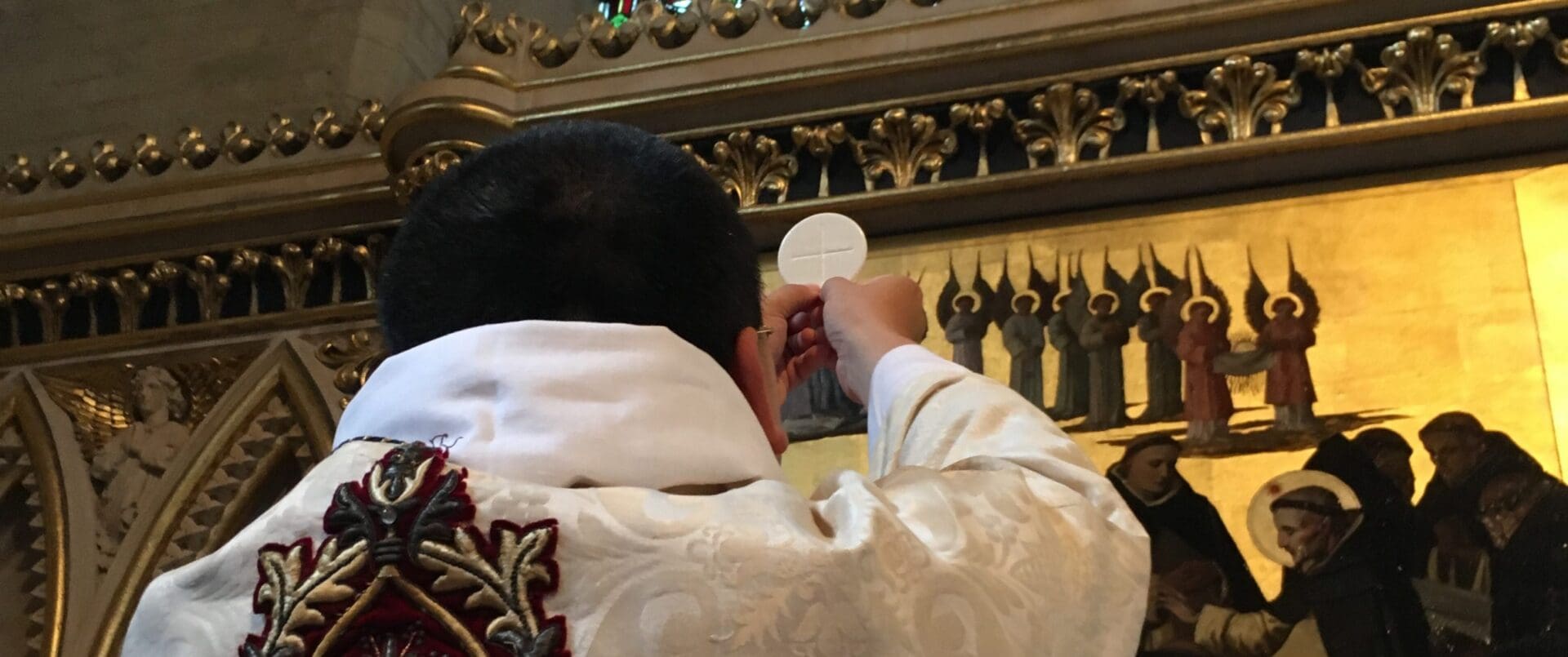Q: Which version of the Rituale Romanum is allowed by Summorum Pontificum, and does it allow for any English texts?
A. While many rightly focus on Summorum Pontificum’s restoration of the Missal of St. John XXIII as an “extraordinary expression” of the Roman Rite, it is often overlooked that Pope Benedict’s motu proprio likewise reestablished the use of the other pre-conciliar liturgical books, one of which was the Rituale Romanum (“Rituale”). The lone reference to the Rituale is found in article 9, §1 of Summorum Pontificum. Here pastors are granted permission “to use the older ritual in administering the Sacraments of Baptism, Matrimony, Penance and the Anointing of the Sick,” the “older ritual” being the 1952 Rituale, the last typical edition prior to the Second Vatican Council. In addition to the Sacraments, the 2011 instruction on the proper application of Summorum Pontificum by the Pontifical Commission Ecclesia Dei, the document Universae Ecclesiae, clarifies that the Rituale can be used in its entirety (35). The Rituale was a sacerdotal book containing all of the rites typically celebrated by the priest. For ceremonies pertaining to the bishop, a separate liturgical book was used: the Pontificale. Thus, in addition to the administration of the aforementioned Sacraments, the Rituale contained the rites related to Christian burial, deputed exorcisms, and the majority of blessings. The section on blessings, the De benedictionibus (Tit. IX), was by far one of the most substantial of the Rituale, comprising 360 of the liturgical book’s 878 total pages.
Although the formularies found in the 1952 Rituale were in Latin, the Holy See often permitted local Churches to produce their own editions that allowed for some use of the vernacular. A local edition, referred to as a Collectio Rituum—or “Collection of Rites”—typically featured a mix of Latin and vernacular texts, and contained all of the rites for Baptism, Matrimony, Penance, and Anointing, as well as some select blessings. This Collectio served as a practical compendium that the priest could use as an alternative to the full Rituale. While the last Collectio approved for use in the United States was issued in 1964, the lone American Collectio permitted according to the norms set by Summorum Pontificum and Universae Ecclesiae appears to be that of 1961. According to these two documents, the use of books in forma extraordinaria is limited to those that were in effect in 1962, the year in which the Second Vatican Council opened.
Although both the 1961 and the 1964 editions are based on the 1952 typical edition of the Rituale, there are some noticeable differences between the two. While a large number of prayer texts in the 1961 Collectio are permitted in the vernacular, Latin remains obligatory for some texts, particularly those containing sacramental formulae or exorcisms. On the other hand, the 1964 Collectio, which sought to update the 1961 edition according to the norms established by Sacrosanctum Concilium, permits all of the texts to be used in the vernacular, with no restrictions. An example of this easing of the restriction on the use of the vernacular can be seen in the “Blessing of Candles and Throats on the Feast of St. Blaise.” Whereas the 1961 Collectio does not allow the option of saying the blessing of the candles or the blessing of throats in English, the 1964 Collectio does. Indeed, in every instance where the 1961 requires Latin, the 1964 appears to give the vernacular as an alternative. Although the U.S. bishops requested and received permission in 1964 to use an English translation of the entire Rituale Romanum produced by Father Philip Weller and published in 1965 by Bruce Publishing Company, this permission does not appear to satisfy the terminal date of 1962 established by Summorum Pontificum and Universae Ecclesiae. Thus, while the vernacular may be used when giving blessings in the Extraordinary Form, its use is limited only to that which one finds in the 1961 Collectio.
Moreover, apart from easing restriction of the vernacular, the 1961 Collectio also features content that is not found in the 1964 Collectio, and vice versa. For instance, the 1964 Collectio contains a precursor to the RCIA entitled the “Rite for the Baptism of Adults arranged according to the Stages of the Catechumenate” (Ordo Baptismi Adultorum per gradus Catechumenatus Dispositus). Not only is this ordo not found in the Collectio of 1961, but it is likewise not found in the Rituale of 1952, having been devised by the liturgical Consilium following the promulgation of Sacrosanctum Concilium. Furthermore, the selection of blessings in the 1961 Collectio is more ample than those found in the 1964 Collectio. For instance, the 1961 edition features the blessing of a crucifix, of images of our Lord, the Blessed Mother and other saints, of herbs on the Feast of the Assumption, of a harvest, of herds, as well as some reserved blessings delegated to a priest. None of these are found in the 1964 Collectio, probably to account for Sacrosanctum Concilium 79 that called for the decrease in the number of reserved blessings and for the revision of Sacramentals according to the needs of the time.
Thus, given that the norms established by Summorum Pontificum and Universae Ecclesiae, and given the differences that exist between the two editions of the American Collectio, it would appear that a strict reading of the motu proprio and subsequent instruction that set the terminus for the use of liturgical books in forma extraordinaria to those that were in force in 1962, is more in keeping with the mind of the legislator.

